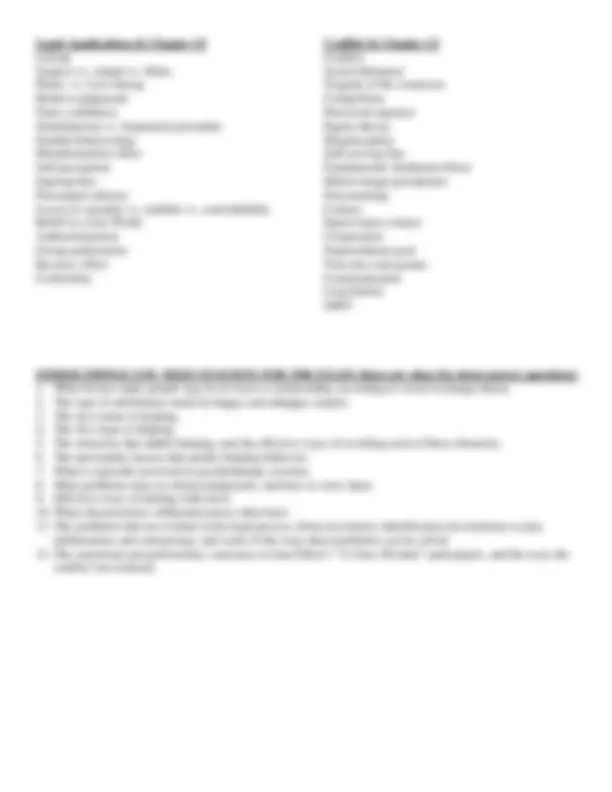



Study with the several resources on Docsity

Earn points by helping other students or get them with a premium plan


Prepare for your exams
Study with the several resources on Docsity

Earn points to download
Earn points by helping other students or get them with a premium plan
Community
Ask the community for help and clear up your study doubts
Discover the best universities in your country according to Docsity users
Free resources
Download our free guides on studying techniques, anxiety management strategies, and thesis advice from Docsity tutors
Material Type: Exam; Professor: Gore; Class: Social Psychology: W; Subject: PSY Psychology; University: Eastern Kentucky University; Term: Unknown 1994;
Typology: Exams
1 / 2

This page cannot be seen from the preview
Don't miss anything!


Psychology 300 Social Psychology Study Guide for Exam 4 TERMS Note: You should be familiar with the terms and people below and be able to provide a concrete example of each concept. If two or more terms have a “vs.” between them, you need to be able to differentiate between those concepts. For any research studies mentioned below, you will need to remind yourself what the researchers did and what they found.
Relationships & Chapter 11 Stages of Relationship Development Social Exchange Theory Equity Theory Social Penetration Theory Superficial vs. Emotional Disclosure Positive Illusions vs. Self-Verification Negative Affect Reciprocity Genderlects Demand/Withdraw Interaction Pattern Attributional trap
Helping & Chapter 12 Bystander Effect Kin Protection Burnstein et al (1994) “helping relatives study” Reciprocity Norm Social Responsibility Norm Egoistic vs. Altruistic Helping Empathy-Altruism Theory Negative State Relief Theory Distraction Latane & Darley (1968) “noticing smoke study” Pluralistic Ignorance Shotland & Straw (1976) “staged fight study” Diffusion of Responsibility Incompetence Direct vs. indirect helping Cramer et al (1988) “helpful nurse study” Audience inhibition Time Pressure Darley & Batson (1973) “Good Samaritan study” Belief in a Just World Religiosity Moral inclusion Social exchange theory
Clinical Applications & Chapter 14 “Spiraling” Depression Depressive realism Depressive vs. Optimistic explanatory style Loneliness Sociometer hypothesis Social anxiety Self-fulfilling prophecy Self-perception theory Foot-in-the-door phenomenon Self-presentation Efficacy training Michaelangelo phenomenon Behavioral confirmation Social support Illusory correlations Hindsight bias Overconfidence Leading questions Clinical vs. Statistical prediction Stress Primary vs. Secondary appraisal Weiss (1970) “electric shock” study Type A vs. Type B personalities Dispositional Optimism Stress buffers Fitness Brown (1990) “fitness & stress” study Emotional Disclosure Social Support Emotional vs. Esteem vs. Tangible vs. Informational Berkman & Syme (1979) “support & death” study
Legal Applications & Chapter 15 Lineup Suspect vs. culprit vs. fillers Photo- vs. Live-lineup Relative judgments False confidence Simultaneous vs. Sequential procedure Double-blind testing Misinformation effect Self-perception Ingroup bias Perceptual salience Locus of causality vs. stability vs. controllability Belief in a Just World Authoritarianism Group polarization Recency effect Conformity
Conflict & Chapter 13 Conflict Social dilemmas Tragedy of the commons Competition Perceived injustice Equity theory Misperception Self-serving bias Fundamental Attribution Error Mirror-image perceptions Peacemaking Contact Equal-status contact Cooperation Superordinate goal Non-zero-sum games Communication Conciliation GRIT
OTHER THINGS YOU NEED TO KNOW FOR THE EXAM (these are clues for short answer questions)